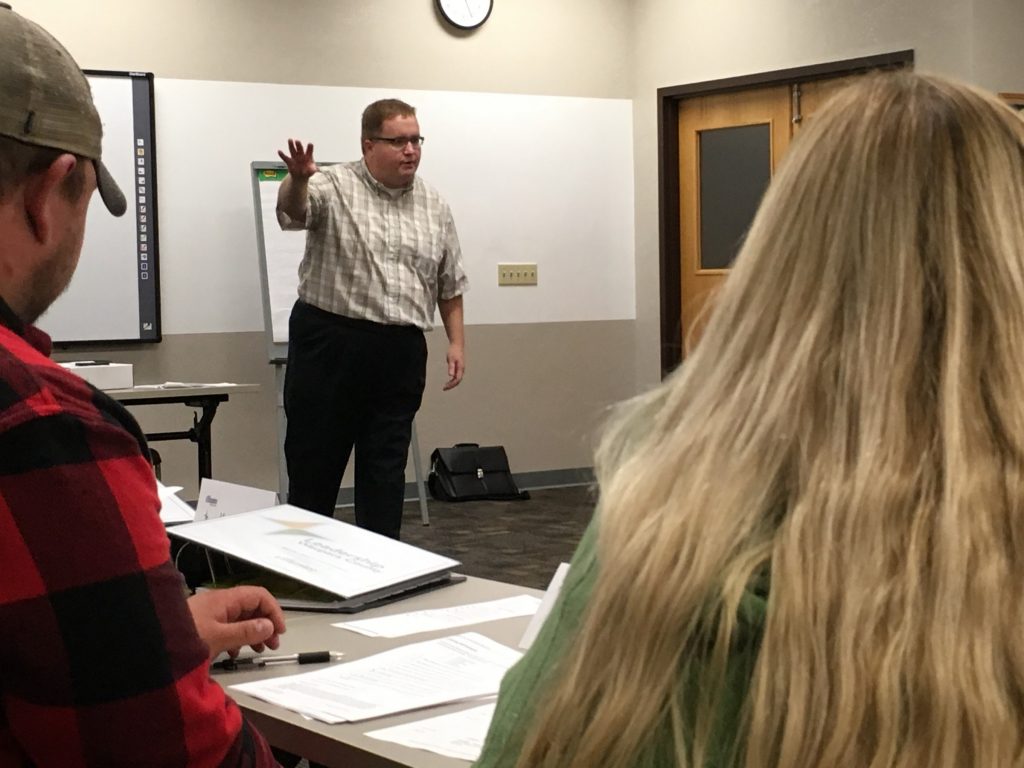In this first guest blog post, Leadership Waupaca County participant Kurt Schwan shares insights from the October 13 LWC session: Effective Communication. Special thanks to FVTC (Fox Valley Technical College) for sponsoring the classroom space.
Are you an active listener? To be an active listener can prove to be difficult for most to master. Through personal experience and research I have compiled the following strategies that may be useful to you in your efforts to improve your listening skills.
GOOD-BYE DISTRACTIONS
First, in order to be a good listener you mustn’t be distracted. Cell phones, notebooks, computers, etc should remain out of sight and out of mind. It is difficult to give someone your undivided attention if your device is vibrating every couple minutes.
CLEAR YOUR MIND
Second, try to listen with a clear mind. Sounds easy, but it is not because our minds are capable of multi-tasking. An active listener must clear his/her mind of clutter. Hunting, fishing, supper options, etc need to be put on the back burner when someone is speaking to. The thoughts will still be there but the focus is on the speaker and the conversation at hand.
CLARIFICATION
Third, it is important to clarify what the speaker is saying. Clarification usually takes the form of paraphrasing. The key to paraphrasing is to use the following form of a sentence, “So you are saying that…..right?” This shows the speaker that you are listening and provides feedback.
EYE CONTACT
Fourth, eye contact is another important aspect of active listening. Making eye contact shows respect toward the speaker. Eye contact can be awkward for some but if you are able to focus on the bridge of the nose or one of the speakers’ eyes it can feel a bit more natural and less intimidating for the speaker.
BODY LANGUAGE
Fifth, body language provides insight to the speaker as to how the conversation is going. Being mindful of the speaker’s body language is important as well as your own body language. For example, if the speaker is talking about a funeral highly unlikely that you will see excitement in his/her face, wide, bright eyes, and a grin. The body language would be more fitting to the topic. The same goes for the listener. In this instance one would not be grinning or expressing excitement or happiness for such a topic. Crossing the arms can indicate that one has withdrawn themselves from the conversation. Sitting upright and leaning in can indicate that you are actively listening.
RESPONSIVENESS
Lastly, responding appropriately is a key to being a good listener. Interrupting when the speaker is still talking is not being an active listener since the speaker has yet to finish his/her thoughts. Also, in regards to responding, you want to respond with questions about the topic the speaker was discussing. If they were discussing the weekend at their cabin you would not want to talk about your wife’s car.
To summarize, listening is an important part of communicating effectively. Active listening takes practice in order to master the craft. Listening gives you the opportunity to actually hear and digest what the speaker is saying. If you utilize the strategies I provided above you will be on your way to becoming an active listener.
“Most people do not listen with the intent to understand; they listen with the intent to reply.”
Stephen R. Covey
Have questions about Leadership Waupaca County? Visit our home page or contact us!




